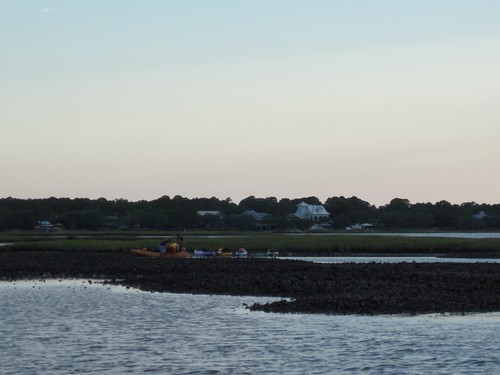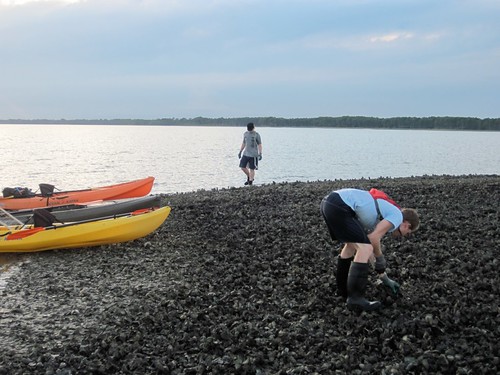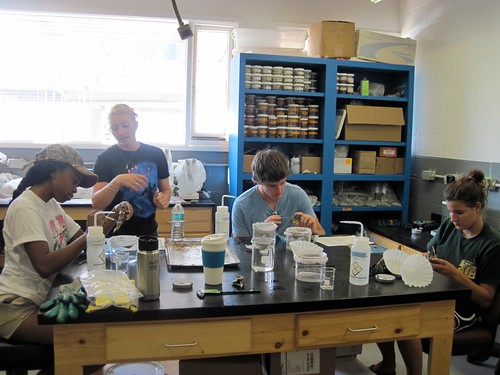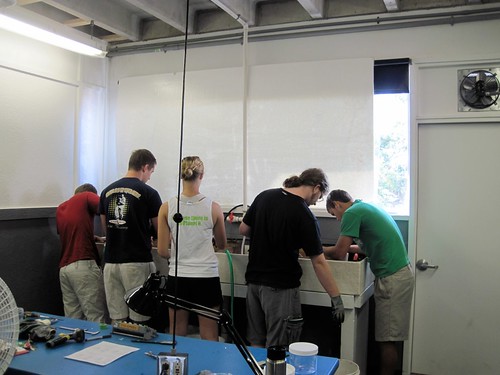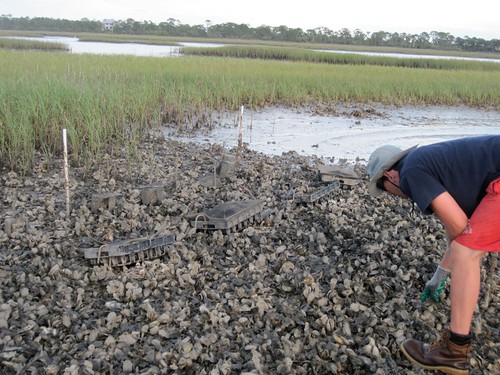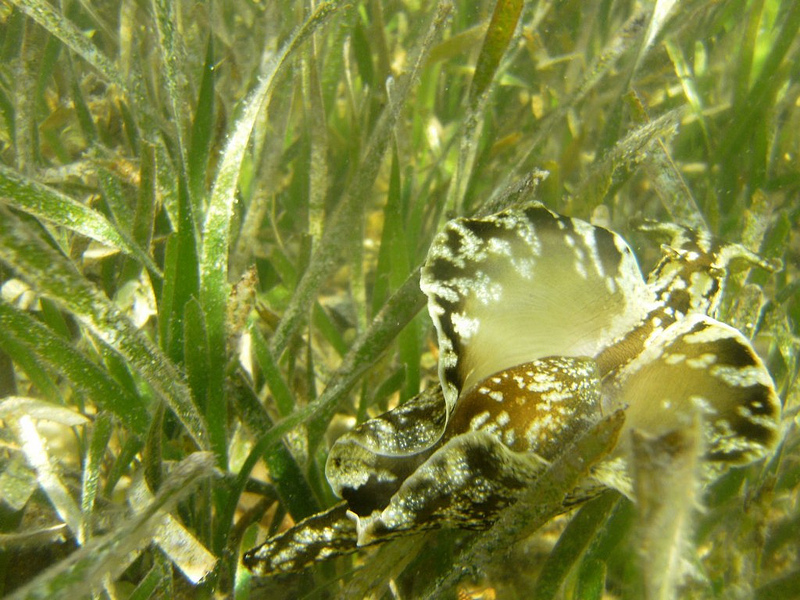Dr. Randall Hughes FSU Coastal & Marine Lab
I recently completed teaching a 2-week course in Field Marine Science at FSUCML. Nine undergraduate students and one graduate teaching assistant lived in housing at the lab for the duration of the course, and we were busy from virtually sun-up to sun-down each weekday with class activities. It was a lot of fun:
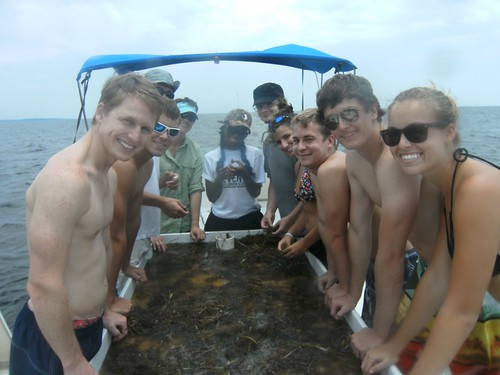
The students of Field Marine Science 2012 inspect what we caught trawling through a local seagrass bed.
This year, we focused on oyster reef ecosystems, taking advantage of past and ongoing projects in the Hughes and Kimbro (aka, “Hug-bro”) labs. We conducted a field experiment, field survey, and mesocosm experiment examining sediment accumulation on oyster reefs – and all in just 2 weeks!
Well, the field experiment and survey were started ahead of time by Hugbro personnel, but the labor-intensive breakdown and sample processing tasks were handled by the class.
After all that time spent learning about, walking around on, and handling oysters, everyone was ready to eat a few by the end of the second week!
In addition to gaining hands-on research experience, a goal of the class was to become familiar with common coastal habitats in northern FL. So we squeezed in a few trips to seagrass beds and salt marshes as well, enjoying the opportunity to ride on a boat that didn’t require paddles.
And we were all happy to don snorkels and masks to explore the seagrass instead of gloves and boots for the oysters!

Results of a study by Feldon and colleagues demonstrating an increase in the quality of hypotheses included in graduate student research proposals when the students had teaching responsibilities.
As I catch up on the research projects that languished a bit while I was teaching, it is reassuring to think about the results of a recent study illustrating that teaching can increase the quality of research. Don’t get me wrong – I enjoy and value teaching for its own sake – but the tasks of teaching and research can often seem in competition with one another when time is limited (and when is time not limited?).
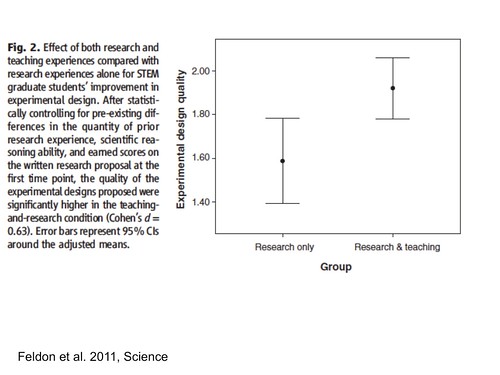
Additional results from the study by Feldon et al. showing better experimental design in research proposals written by graduate students that teach and do research.
Enter the study by Feldon and colleagues in the journal Science, showing that graduate students with teaching responsibilities formed better hypotheses and generated better experimental designs in their own research proposals than graduate students without teaching responsibilities. This benefit did not result from explicit instruction in hypothesis testing or experimental design geared towards the graduate students themselves – rather, the process of teaching scientific concepts to others made them better able to conduct research. So add to the inherent fun and satisfaction of teaching a boost to my research! Time to write a (better?) research proposal…

